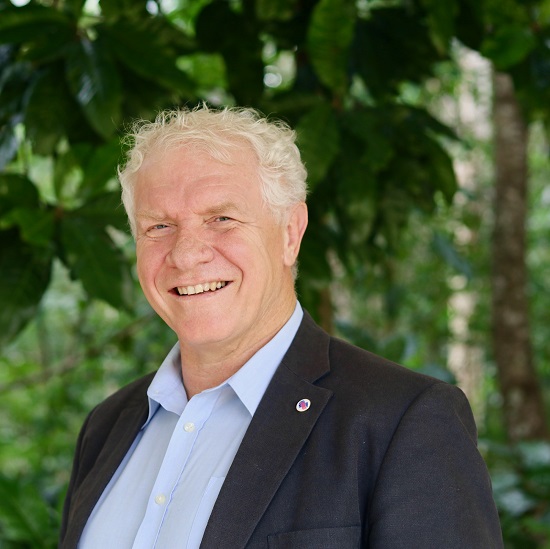



Expert says Australia's cattle could support “rewilding” of landscape
Native Australian animals that have been wiped out of pre-colonisation habitats could be reintroduced to their natural areas, and a CQUniversity researcher hopes grazing cattle could help with the “rewilding”. “Rewilding” is the restoration of self-sustaining ecosystems, while minimising human intervention, to return an area to its natural state and promote threatened species to thrive.
“Rewilding” is the restoration of self-sustaining ecosystems, while minimising human intervention, to return an area to its natural state and promote threatened species to thrive.
CQUniversity Adjunct Professor Iain Gordon argues that domestic livestock could actually support the process, in a recent study published in the international Sustainability journal.
The renowned zoologist, who has worked across Africa, Asia, South America, Europe and Australia, explains “Rewilding Lite” is a less extreme version of the popular movement that includes “wildlife-friendly farming”, meaning domestic grazers gradually allow environmental conditions to become wilder while still producing cattle.
Whilst cattle ranching in Australia has been associated with reduction in the habitat of native species, Prof Gordon also argues that grazing pressure from cattle could also reduce the build-up of biomass that led to the destructive fires killing untold numbers of Australian wildlife last summer.
“We’ve lost many of the native species of large herbivores, such as the giant short-faced kangaroo and the giant wombat in the past 50,000 years. Cattle could replace the function that they performed if we manage them effectively,” Prof Gordon said.
“Rewilding Lite does allow for some productive offtake, and, therefore, could be an alternative form of land management for agricultural land – opening up a much larger area of the earth’s surface for potential rewilding activities.”
In Australia, Prof Gordon says rewilding would create habitats for small mammals, lizards and skinks that allow them to escape from feral predators such as cats and foxes, while reducing risk of fire ripping through the system leaving whole communities of native fauna vulnerable to a range of perils.
“There is significant, and growing, interest amongst scientists and advocacy groups in rewilding large parts of our landscapes,” he said.
Rewilding is a popular ecology movement in Europe, the United States and South America, where species reintroduced to restored ecosystems have included predators such as wolves and coyotes, and even jaguars. There are also discussions in North America about replacing extinct mammoths and ground-sloths with Africa elephants and rhinos.
Prof Gordon says herbivores are an essential part of the process, and domestic cattle could take the place of long-extinct herbivore mammals in the ecosystem.
“In complex ecosystems, the individual decisions by animal foragers, at small scales, determine the individual plants and the parts of plants that grow and thrive,” he explained.
“As well as impacting food sources, large herbivores, including cattle, have indirect effects on ecosystems through trampling, rolling, digging, defecation and urination – so large mammalian herbivores are essential in any rewilding project.”
Prof Gordon says as the global population grows to 11 billion in the next 30 years, and demand for meat grows, ecosystems will face increased stress as grazing activity increases.
“This stress actually reduces the opportunities for ‘Rewilding Max’, or zero-intervention ecosystem restoration, to succeed,” he said.
While he admits that some rewilding advocates see cattle as detracting from the “wildness” of an ecosystem, Prof Gordon insists that domestic livestock, particularly locally adapted breeds are well adapted to provide herbivory within the ecosystem.
“Due to their importance for food production and draught, we know so much about livestock animals, including physiology, behavior, genetics, and husbandry, and diets and habitat use of livestock is also relatively well understood, as compared to wild species of herbivores.”
“This means that we can manage them more effectively to meet a range of conservation objectives.”
Read the full journal article here: https://doi.org/10.3390/su13063347


